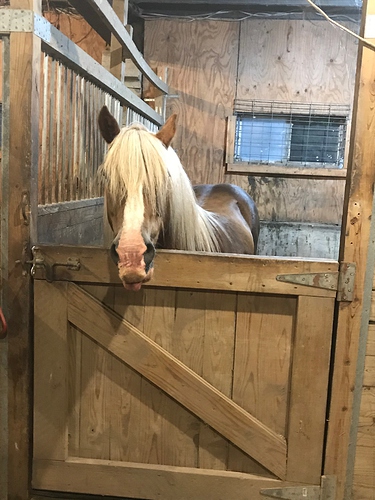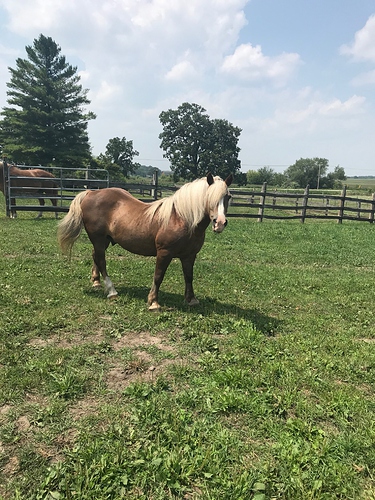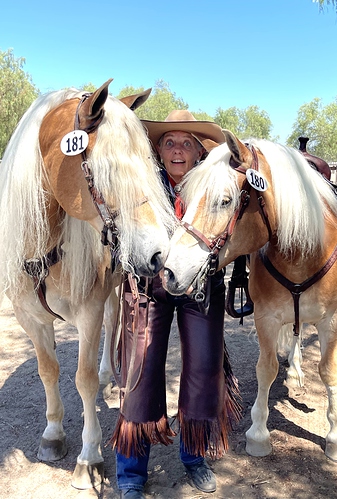So I’m a 60 year old former eventer who has fallen head over heels for an adorable, chunky little 13.3 hand Haflinger.
Moto Moto came to me through a friend who brought him and a bunch of his buddies up to IL from a farm in Kentucky that was shutting down. They guesstimate his age at 12-13 based on his teeth. He’s broke under saddle and I suspect he used to drive.
My first question is mane management. He has enough mane for three horses, and I’m wondering the best way to maintain it. I have it tangle-free and brush it regularly, but I’m wondering if keeping it in loose braids is better?
The forelock has been detangled but there is a big lump at the base I don’t know what to make of. At first I thought it was a matt, but I have had no luck untangling it, and I’m not 100% certain where the skin ends and the hair begins. Could it happen where a matt is there so long it pulls the skin up and makes a permanent lump?
Those are the only real pressing questions I have now, but if anyone has any Haffie words of wisdom for me, thanks in advance!
Here is the little love bug:!







